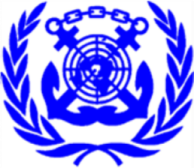
Comparative Advantage in International Trade
A case study
FJ Company is a Miami-based corporation involved in buying products from U.S. manufacturers for sale in Latin American and Caribbean countries. The company also finds U.S. markets for products imported from both Europe and Latin America. FJ has twelve employees, including the general manager, a marketing vice president, a treasurer/controller, two sales managers, four operations people, and three secretaries. The firm’s annual sales have run at about $8.1 million during the past three years, after growing from $200,0000 in 2006, the first year of operations. Despite the various business-cycle problems that have occurred, this small firm has survived and is looking for ways to expand.
The general manager of FJ is reviewing the profitable business that his company has had from importing fertilizers for central Florida farmers since the mid-2000s. The French supplier of FJ’s fertilizers (Ferticosa) has always shipped high-quality merchandise, with few delays or other logistical problems. Recently, the possibility of competition from other suppliers has begun to worry the general manager. Fertilizers sales have been such a dependable part of FJ’s total sales that he does not want to lose that business.
Pricing, however, is becoming a problem. During the second major oil price hike in 2007-2008, raw material prices rose dramatically, such that FJ’s costs tripled by year-end 2001 to $240 per ton for its medium-grade fertilizer. This price reflects only the f.o.b. cost of the fertilizer at shipment from the port of Le Havre, France. Fortunately for FJ, demand for fertilizer by the firm’s main customers in central Florida has remained high, even at the higher prices that FJ passed on.
Recently the company has been notified by the U.S. Treasury Department that fertilizers probably will be added to the list of products valued at the “American Selling Price” for customs purposes. (Under American Selling Price valuation, the tariff charged on an imported product is calculated as a percentage of the current U.S. price, rather than as a percentage of the stated price of the shipment.) Such a policy could raise the tariff payment significantly, because U.S. prices are about 15 percent higher than the f.o.b. price from France.
Competitive problems for FJ have intensified since another French firm, Jardiner, set up a phosphate mine and processing facility near Tampa, Florida. Phosphates are a major component in most kinds of fertilizers. So far, Jardiner has been exporting the phosphates back to its French fertilizer plant, but it is expected that the company will soon begin making fertilizer in Florida. Jardiner ranks among the largest fertilizer producers in the world. At the present time, this French firm sees a cost of production of phosphates in Florida which undercuts the approximately $40 per ton cost in France by 30 percent. (All of these numbers are from 2001; the percent of FJ’s total sales. Though no major problems have arisen yet, the future looks rather clouded. Demand for fertilizer seems likely to remain substantial, but price competition is becoming an important factor.
Critical thinking
- Why do companies engage in international trade? Discuss some of the opportunities and problems that multinational companies face.
- Under what circumstances is exporting a certain product to another country profitable?
- Give several examples of products that are exported from or imported to your country because of a comparative advantage.
- Imagine that you are the manager of a new import-export firm in your country. What products will you trade? To which countries will you import or export these products. Give reason to your choices.
- What are some of the specific problems that you might encounter as manager of the import-export company in your country?
Case analysis
- How important is the fertilizer business to the FJ Company? What other business should the company consider entering?
- What is the level of demand for the fertilizer in central Florida? Is the demand likely to change over the next few years?
- Describe how the pricing of the fertilizer is becoming a problem for FJ Company. Consider the effect of the changing cost of:
- oil b)
- raw materials
- c) U.S. tariff on imported fertilizers.
- Describe the competitive problems that FJ Company may face from Jardiner, considering the following points:
- What operations has Jardiner set up in Florida?
- What impact have these operations had on FJ’s fertilizer business?
- What is the comparative advantage of producing fertilizers in the United States rather than France? What possible effect could this have on FJ’s fertilizer business?
- Based on your discussion of these issues, make recommendations on how to expand FJ’s business and how to increase profitability?
 Please click on the addresses to have access to the links on International transportation (containers) and International methods of payments.
Please click on the addresses to have access to the links on International transportation (containers) and International methods of payments.






